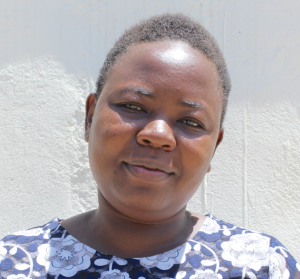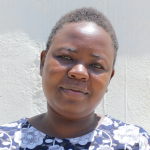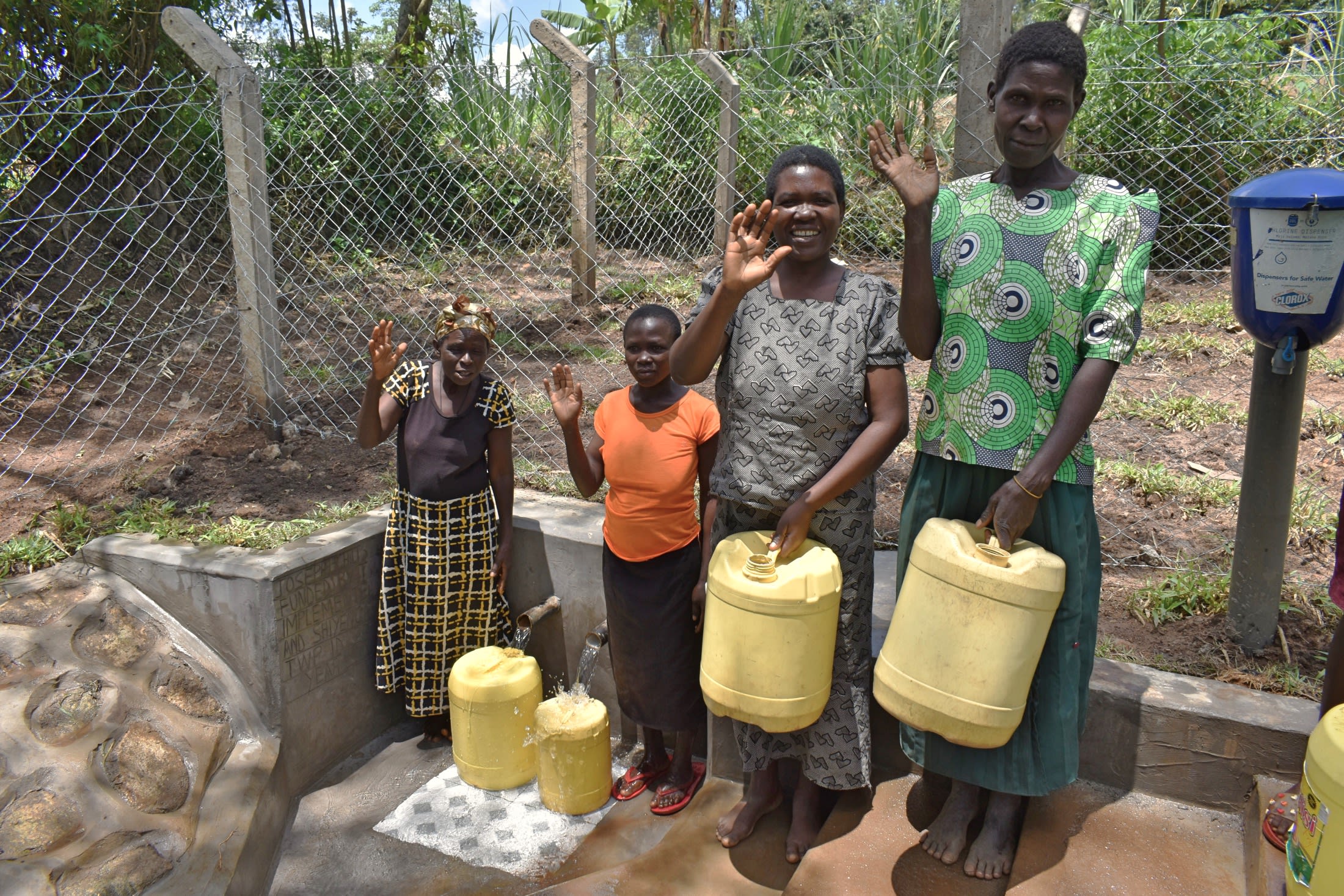The 140 community members who live in this area of Shiyenge collect water from Joseph Chiliswa Spring each day and carry it home however they can; on their heads, on bicycles, or by wheelbarrow.
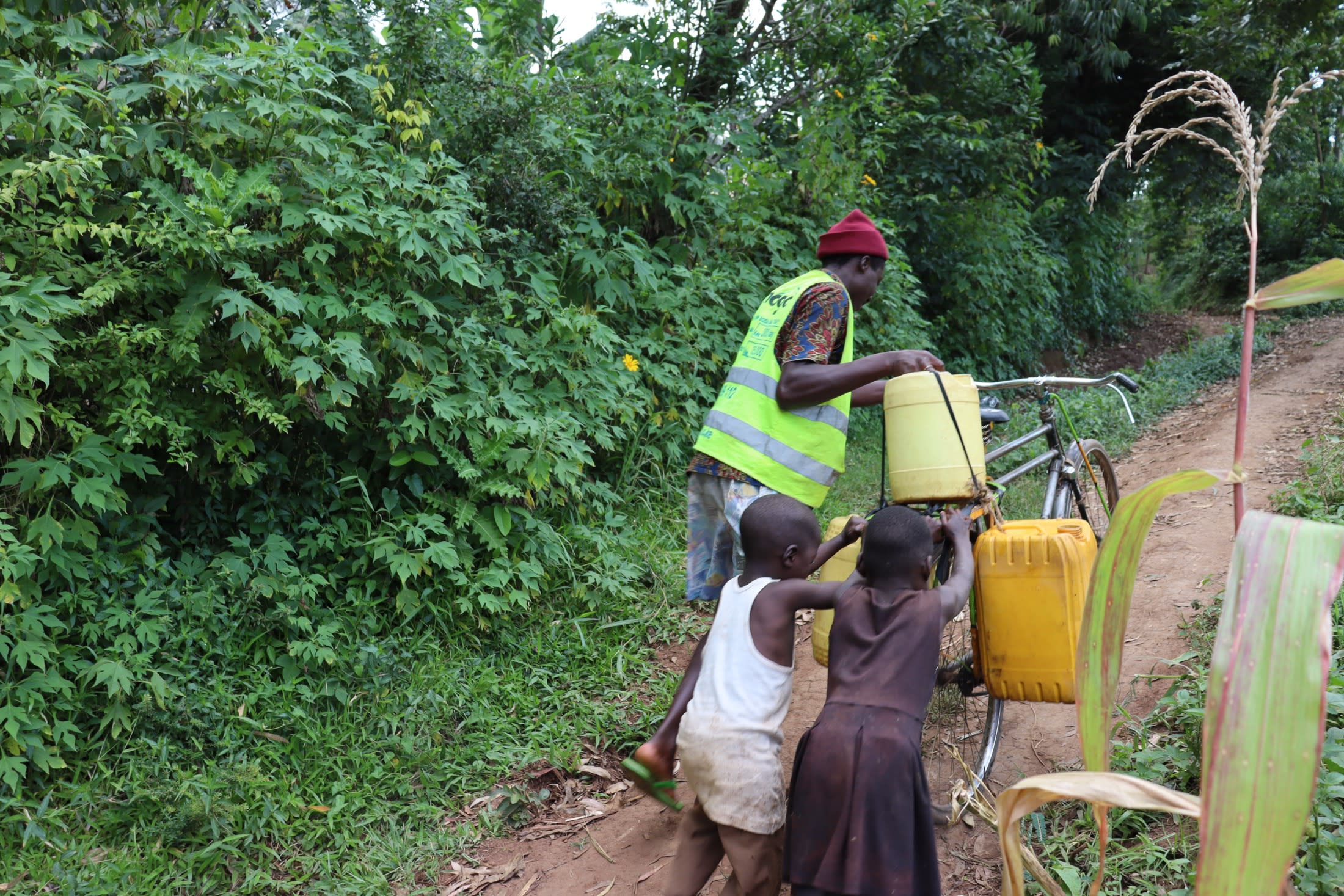
"Everyone is busy doing something to ensure that they put food on the table and make sure their children are at school. It is an industrious community," said our field officer Betty Muhongo.
People work hard to collect water from the partially protected spring, but sadly, it doesn't function correctly, so its deficiencies are wasting everyone's valuable time. This is time they need for other essential things such as working, tending their homes, and attending school, which could help improve their lives.
"Not all [of the] spring water goes through the pipe as we could see water oozing from the base of the spring, and the drainage channel is blocked, making it difficult to draw water since there is backflow and a lot of water fills up at the drawing point," Betty said when describing the spring's condition.
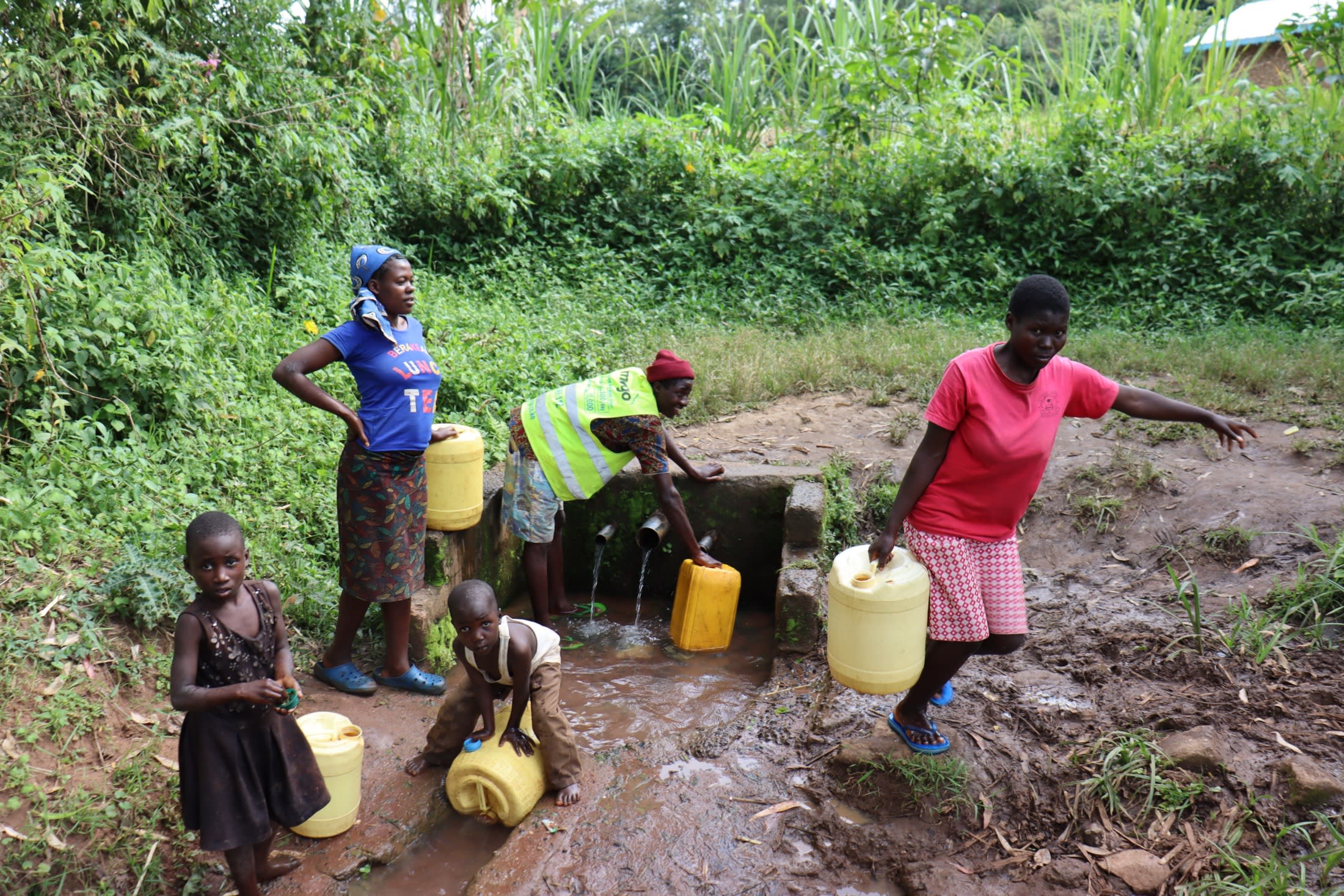
Note the little boy filling his jug with stagnant water above because he doesn't want to wait to collect.
"Water from the catchment area has not been fully tapped (even though there are three improvised collection pipes). This has led to a low discharge rate leading to overcrowding at the water point, especially during the weekends. Water users are forced to draw water very early in the morning and late in the evening to avoid queuing," stated Betty.
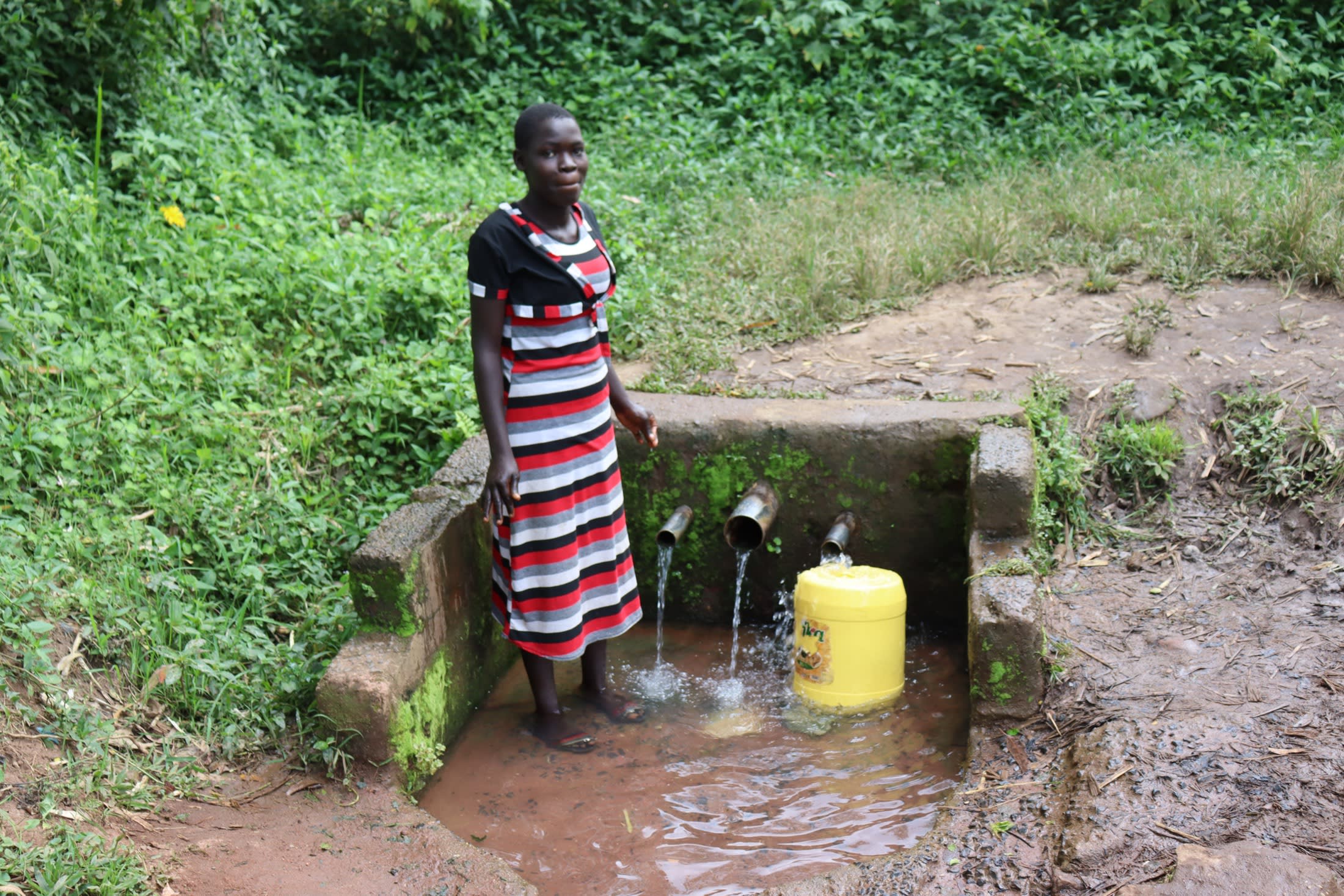
"Time is very important. [For now] I need to reschedule my study program to ensure that there is water before settling down. [I] am really trying, but [I] am sure if the spring will be protected, there will be no need for one to be at [the] spring that early or late in the evening. Water will be drawn at any time during the day," said 17-year-old Christine O., above at the spring.
"With the lack of installed stairs, accessing the spring is a challenge and, at times, leads to community members injuring themselves in the process of going to fetch water. I rather pay someone to help get water than risk my life going to the spring, especially during rainy seasons," said 48-year-old farmer Rose Muronji, shown below.
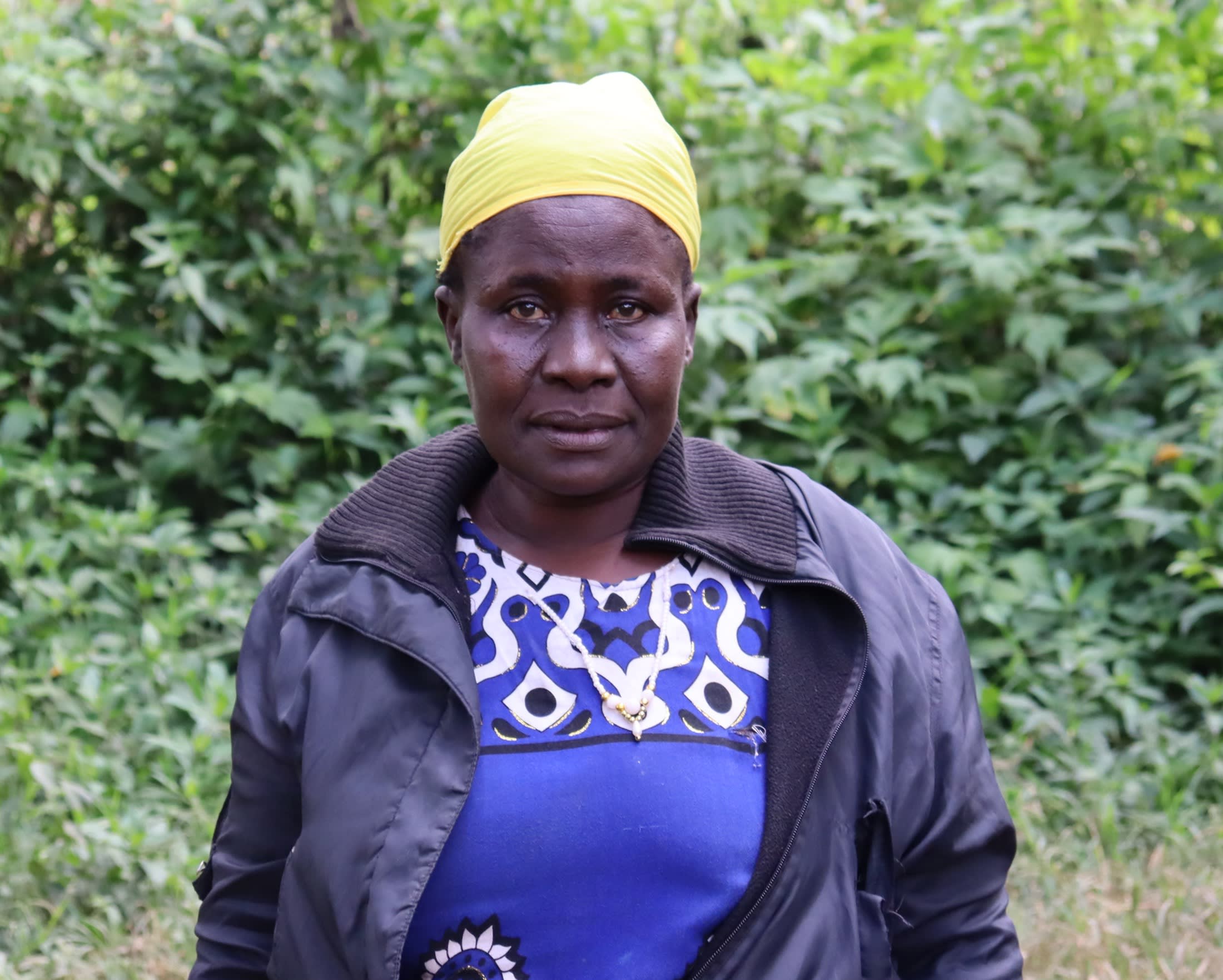
But time wasting is not the only issue facing community members. There are also cases of waterborne diseases regularly reported, causing community members to spend a lot of money on medication.
"Protection of the spring will lead to an increase in the discharge speed and reduce overcrowding at the water point. When the spring is protected, all the challenges will be solved the water users will be trained on how to take good care of their spring," concluded Betty.
What We Can Do:
Spring Protection
Protecting the spring will help provide access to cleaner and safer water and reduce the time people have to spend to fetch it. Construction will keep surface runoff and other contaminants out of the water. With the community's high involvement in the process, there should be a good sense of responsibility and ownership for the new clean water source.
Fetching water is a task predominantly carried out by women and young girls. Protecting the spring and offering training and support will, therefore, help empower the female members of the community by freeing up more of their time and energy to engage and invest in income-generating activities and their education.
Training on Health, Hygiene and More
To hold training, we work closely with both community leaders and the local government to approve small groups to attend training. We ask community leaders to invite a select yet representative group of people to attend training who will then act as ambassadors to the rest of the community to share what they learn.
The training will focus on improved hygiene, health, and sanitation habits in this community. With the community's input, we will identify key leverage points where they can alter their practices at the personal, household, and community levels to affect change. This training will help to ensure participants have the knowledge they need about healthy practices and their importance to make the most of their water point as soon as water is flowing.
Our team of facilitators will use a variety of methods to train community members. Some of these methods include participatory hygiene and sanitation transformation, asset-based community development, group discussions, handouts, and demonstrations at the spring.
One of the most important issues we plan to cover is the handling, storage, and treatment of water. Having a clean water source will be extremely helpful, but it is useless if water gets contaminated by the time it is consumed. We and the community strongly believe that all of these components will work together to improve living standards here, which will help to unlock the potential for these community members to live better, healthier lives.
We will then conduct a small series of follow-up trainings before transitioning to our regularly scheduled support visits throughout the year.
Training will result in the formation of a water user committee, elected by their peers, that will oversee the operations and maintenance of the spring. The committee will enforce proper behavior around the spring and delegate tasks that will help preserve the site, such as building a fence and digging proper drainage channels. The fence will keep out destructive animals and unwanted waste, and the drainage will keep the area's mosquito population at a minimum.







 Rehabilitation Project
Rehabilitation Project










